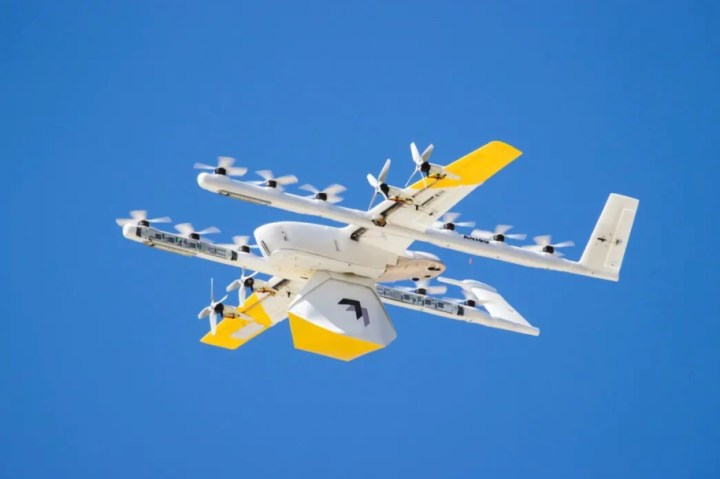
Although advances have clearly been made in recent years, there are still a number of obstacles preventing drone delivery services from going mainstream.
Top of the list is, of course, safety, with regulators keen for clear proof that any autonomous aircraft flying overhead won’t suddenly crash into an obstacle — or indeed each other — putting people on the ground in danger.
Another problem that gets less attention is noise. If drone delivery really is to become a part of everyday life for urban communities, the companies developing such aircraft will have to make them much quieter or risk a backlash from those irritated by the buzzing rotors as the machines fly back and forth during delivery runs.
With that in mind, Alphabet-owned Wing — one of the leaders in the field of drone delivery — has been working on a new aircraft design that it claims almost halves the amount of noise emitted by the previous model.
It will start using the machine in the coming weeks in a suburb in Canberra, Australia, where the company has been testing a drone delivery service since 2019.
“Having made thousands of deliveries to customers in Canberra over the last two years, we’ve also heard community feedback regarding noise and overflight of our drone in the neighborhood, and we are committed to making improvements in response to their feedback,” Wing spokesperson Jesse Suskin said in comments reported by local media, via DroneDJ.
Although the service seems to have been broadly welcomed in Canberra, some residents continue to complain about the noise caused by the drones as they pass overhead.
In one colorful comment reported soon after the delivery service launched, a resident said Wing’s drone sounded like “a chainsaw gone ballistic,” while others said the unpleasant racket caused them to stop using their yard as much. A number of residents in the Canberra suburb of Bonython are so upset by Wing’s service that they formed a group to “raise awareness of the negative impact of the drone delivery service on residents, pets, and bird life” in the area, and is aiming to “stop the drones and their intrusiveness on the peace and quiet of our suburb and environment.”
Canberra residents who use the drone delivery service place orders using a smartphone app. Various local businesses offer a range of items, including fresh food, drinks from coffee shops, and over-the-counter medicines. After tapping the “buy” button, one of Wing’s delivery drones buzzes to the customer’s home, hovers in the air, and lowers the order to the ground via a tether.
Despite the complaints, the service is clearly proving popular with some folks, with Suskin revealing that in the first few months of this year, Wing had already delivered more than 50% of the total number of orders delivered in Canberra in 2020.
Whether the new, quieter drone is enough to end the complaints remains to be seen, though Wing’s effort at least shows it’s listening and attempting to improve the situation for affected residents.

